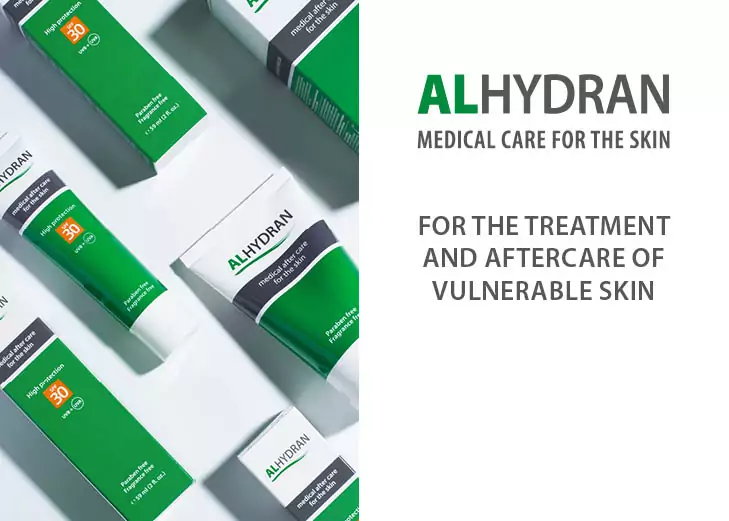Why Topical Ointments and Creams?
Several prescription and over-the-counter topical agents are available, many claim to alleviate symptoms, improve the appearance of scars and accelerate wound healing. Topical therapies have the advantage of being easy to use, are easily available and deliver the ingredients directly to the scar. Patients often decide (maybe based on word of mouth) themselves on which topical agents to use rather than through recommendations from a scar specialist. Topicals are not usually effective on their own and other treatments are also usually necessary. Some information on common topicals is given here:
Aloe Vera (Alhydran®)
Allydran is an aloe vera based cream that has good evidence to show significant improved hydration in scars. Redness is also reduced. Not all aloe vera based creams are equal and may not provide the same results. Effective aloe vera creams may be particularly useful for dry scars.
Imiquimod 5%
Imiquimod is an immune-response modifier, used for the treatment of warts, basal cell carcinoma and actinic keratoses. Imiquimod increases collagen breakdown and reduces collagen production, this may improve scarring. The cream is applied every other night for 8 weeks after surgery.
Possible adverse effects that have been reported:
- irritation
- hyperpigmentation (the skin is darker)
Indicated for:
- keloids
Mitomycin C
Mitomycin C is an anti-tumour antibiotic, it inhibits DNA synthesis and cell proliferation. It is used to prevent reoccurrence (reduces the chances of the keloid returning) following keloid scar excision. The cream (1mg/ml) is applied for 2-4 minutes following keloid excision (removal).
Indicated for:
- keloids
Onion Extract (Contractubex® – Mederma®)
Onion extract has antioxidant and anti-inflammatory properties; it reduces fibroblast proliferation and has been shown to improve dermal collagen organisation in animal model scars.
Indications for the use of onion extract:
- full and partial thickness burns
- hypertrophic scars
- keloid scars
Green Tea
Green tea (Camellia sinensis) contains phenolic compounds, known as catechins, with antioxidant and anti-inflammatory properties. The topical application is believed to protect against UV radiation. Currently, only positive effects on acne and erythema (redness) have been found.
Vitamin E
Vitamin E is often used in topical cosmetics and moisturisers, it is frequently recommended by clinicians due to perceived antioxidant properties. Only 2 studies so far have investigated Vitamin C cream on humans. One study showed positive results in preventing scars in children after surgery. The other study (which included adult participants) showed no difference in scar prevention. Essentially, at the moment there is little evidence on the benefit of Vitamin C cream in scar management.
Possible adverse effects following the use of Vitamin E:
- Contact dermatitis (skin irritation)
- Increase of itching/rash (early use)
Centella Asiatica
Centella Asiatica is the main component of Trofolastin® and is an ingredient used to treat Striae Distensae (SD) (stretch marks). It may inhibit enzymes that both break down collagen and increases the speed of collagen production. The increased production of collagen helps skin tightening and firmness. This cream has no known adverse effects if applied in the right doses.
Tretinoin (retinoic acid)
Tretinoin is frequently used to treat acne and Striae Distensae (SD) (stretch marks). It’s believed to have anti-proliferative properties, which inhibit epithelial cells. A review identified 4 studies that showed a reduction in the length and the width of stretch marks with Tretinoin application. It can only be used to treat and not prevent stretch marks because Tretinoin is known to harm the foetus in pregnancy. Topical tretinoin has been a standard treatment for acne vulgaris for more than 4 decades. Skin irritation from using Tretinoin is a possible adverse effect.
Bio Oil®
Bio-Oil® is recommended by the manufacturers for the improvement of scar appearance, Striae Distensae (SD) (stretch marks) and uneven skin tone. Two randomised controlled studies assessed the efficacy of Bio-Oil® in improving SD appearance. However, although these studies are found on the company website, the full details and results of the study are not available.
Hydroquinone + Azelaic acid
Hydroquinone is a topical bleaching agent and is often used to treat hyperpigmentation (increased colour) in darker skinned individuals. The treatment is effective, and results can usually be seen in 8–12 weeks. The cream reduces inflammation and decreases the production of melanin. A test patch on a small area of hyperpigmentation is recommended before applying generally. Azelaic acid is an alternative to hydroquinone and should be applied twice daily for 16 weeks.
Reported possible adverse effects are hypopigmentation (skin looks lighter) and contact dermatitis (skin irritation).
Indicated for acne scars and pigmented scars.
Reported possible adverse effects are:
- Hypopigmentation (skin looks lighter in this area) of the surrounding skin
- Contact dermatitis (skin irritation)
Indicated for:
- acne scars
- pigmented scars
Sun Protection Factor (SPF) Creams
For all scars and newly healed wounds it is very important to use a high factor SPF for any area exposed to the sun. Sun-protection will help prevent the injured area from developing a darker colour (hyperpigmentation). This discolouration is not the same as a tan and can remain permanently. This is caused by the dysregulation of the melanocytes (pigment-cells) in the injured area when exposed to the sun.





